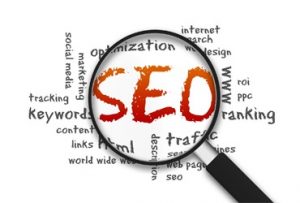 Some Simple SEO Tips
Some Simple SEO Tips
Search engine optimization (SEO) is something you’ve likely heard about before. It can help you attract organic (unpaid) traffic to your website. There is a lot more to SEO than keywords to learn about. This post is not comprehensive; but it will give you the meat of what SEO is, the different types of SEO, what it does, and how to do it. Now to the simple SEO tips you need as an online entrepreneur…
On Page SEO
Essentially on-page SEO is any SEO that you do directly on each page of your website and it all starts with content. But, it also includes architecture, and the actual code within your website.
Content
Anything you put on your website that disseminates information to your audience is content. Posts, articles, memes, images, and graphics – all of it is content. You want to have a variety of different types of content for maximum SEO value.
- Quality vs. Quantity – While it’s true that you want to put up a lot of content for your audience it’s more important for the content to be of high quality. You do want to put up content more often than monthly but you don’t need to put up several things each day if it will compromise the quality of the information you put up for your audience.
- Keyword Research – Many people choose not to do keyword research but if you do it, you’ll waste less time creating content that doesn’t get results and end up with more time to create awesome content that does get results. If you only learn some simple SEO tips related to your keywords you will be far ahead of the game.
- Use Words Strategically – Try to figure out what type of power words make your audience feel something and want to do something. There are general power words that you can use such as “devastating blow” or “majestic views” or something that gets their attention and makes them feel.
- Hot Topics, Updated, and Fresh – A great way to make use of the time you have to create content is to focus on hot topics and trends of the day. Keep the content updated and fresh by using headlines of the day to evoke curiosity. Warning: Don’t try to trick your readers with clickbait. It only works a few times then it stops working and you’ve lost something important: Trust.
- Horizontal & Vertical –You want a combination of both types of content. Think of it this way, horizontal content that covers everything on your website is full of content on all pages like your “about” page, or home page and is consistent throughout. Vertical content concerns itself with a specific topic and goes across all channels and how they work to improve your website. This is discussed more full in an article entitled “Are Vertical and Horizontal Content Strategies Still Relevant?” The two content strategies are described by as:
Horizontal Content Strategy
This strategy focuses on a holistic approach. It covers “meet the team” pages to descriptions on product pages to contacts, community comments, blog posts, and everything in between. With this type of strategy, you’re always thinking about how one page (or one area of content) is working to help your overarching content goals or general business goal. This means analyzing how content works together as well as individually. This is probably the most common approach used by ecommerce companies.
Vertical Content Strategy
While this strategy also thinks big-picture (what strategy doesn’t?), it does put a heavier focus on one specific content aspect—a section, a topic, a type of content, a piece of content, etc.—at a time. This means taking one of these aspects of content and figuring out how it works best across different platforms or with different audiences. This is what many marketing and PR pros think about when they think about content strategy.
- Provide Solutions – Your content also should seek to provide solutions for your audience. They want you to help them solve their problems. They should be able to solve some of their problems without buying anything and your content can fulfill that need.
- Authoritative – Longer more in-depth content such as long blog posts, white papers, and articles as well as guides can help people and search engines know that your site is serious and that you are there to help your audience. I recently created a Focus Guide that is almost seven thousand words in length, and this can most definitely be considered as authoritative content.
When it comes to content and SEO you have a lot of ways that you can improve your content by using good SEO practices such as using keywords within the first paragraph, the title, subheadings and headings as well as anchor text. It is my hope that these simple SEO tips will be helpful in your business. What are your thoughts on this topic?
I’m bestselling author, marketing strategist, and entrepreneur Connie Ragen Green and I would love to connect further with you to help you to achieve your goals. If you are interested in learning how to optimize the syndication of your content, please take a look at my popular Syndication Optimization training course and consider coming aboard to increase your visibility, credibility, and profitability.





Please explain what you mean by “Think of it this way, horizontal content that covers everything on your website is full of content on all pages like your ‘about” page, or home page and is consistent throughout. “
Thanks so much for stopping by to comment, Janet. I believe this article from Higher Visibility on the topic of vertical and horizontal content will be helpful to you and to my other readers, It’s at https://www.highervisibility.com/blog/are-vertical-and-horizontal-content-strategies-still-relevant/ and explains it much better than I did here in my post.
Connie Ragen Green
Connie Ragen Green recently posted…How to Monetize Your Blog Posts
Thanks for the link! I hadn’t heard these terms before, so it was very helpful.